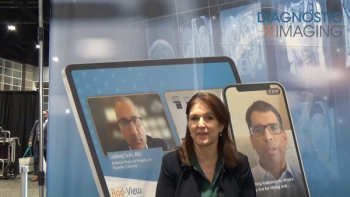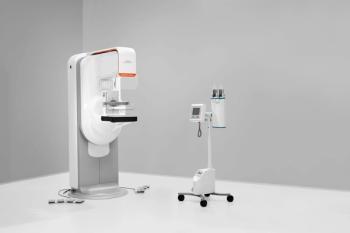
Islet cell therapy quells severe hypoglycemia
Interventional radiologists can help a subtype of diabetic patients effectively reduce the risk of a sudden, violent drop in their blood glucose with a relatively simple procedure called islet cell infusion, according to the National Institutes of Health.
Interventional radiologists can help a subtype of diabetic patients effectively reduce the risk of a sudden, violent drop in their blood glucose with a relatively simple procedure called islet cell infusion, according to the National Institutes of Health.
For more than a decade, researchers have studied the implications of pancreatic islet cell infusions for the treatment of diabetic patients. Efforts have focused on the technique's benefits to patients with type 1 labile diabetes.
This condition, also known as "brittle" or hard-to-control type 1, makes patients prone to sudden glycemic swings that lead to seizures, unconsciousness, and even acute diabetic coma.
Data gleaned from the Collaborative Islet Transplant Registry (CITR) reveal that most patients gained significant benefits from the procedure. While one infusion may not have been enough to keep blood glucose levels stable in all patients, it reduced severe hypoglycemic episodes in most of them.
Nearly all patients receiving an infusion had severe hypoglycemia episodes requiring another person's help before the procedure, but such events are very rare in the year after a successful infusion, an NIH press release said.
The CITR, a database for medical institutions performing the procedure, is funded by the National Institute of Diabetes and Digestive and Kidney Diseases. Investigators from 19 medical institutions in the U.S. and Canada recently provided one-year outcomes from 138 patients who underwent islet cell infusions.
Forty patients received one infusion, while 69 received two, 28 received three, and one received four infusions. More than half of the islet cell recipients no longer needed insulin injections one year after the last treatment session. Three-quarters of those who still needed insulin within a year after infusion could reduce the dose significantly.
Islet cell infusions failed in 19 recipients, and failure occurred from as early as 30 days after the first infusion to more than two years after the last. Eighteen of the 19 centers involved in the registry reported complications, including 77 serious adverse events: 58% of these required hospitalization, and 22% were deemed life-threatening.
Seventeen percent of the serious events were directly related to the procedure and involved infection or bleeding, while 27% were linked to immunosuppressive drugs.
The CITR's role is to collate the information from individual centers into a much larger patient pool. As the registry grows, researchers intend to draw firmer conclusions.
Without the registry, though, it is unlikely that islet cell infusions will become commonplace, said Dr. Richard Owen, an interventional radiologist at the University of Alberta Hospital in Edmonton.
"It is very helpful to the centers involved in this type of research to know how everyone else is getting on," Owen said. "If one center has a complication, it is important to ascertain whether this is an expected problem or a new one. This will help reduce the chance of it happening again."
Researchers have noticed a drop in the incidence of procedural bleeding, a common complication. Upcoming CITR reports should confirm the trend, Owen said.
The registry's latest report provides information on donor and patient characteristics, pancreas harvesting, islet processing, functional potency of donor islets, immunosuppressive medications, lab results, and adverse events.
Participation in the CITR is voluntary, and the information on safety and efficacy is disseminated to investigators, healthcare providers, insurance carriers, and patients.
The registry's efforts will contribute to a better understanding of trends in islet cell infusion, said Dr. Bernhard Hering, CITR's medical director. Hering will be part of NIH-funded studies to begin next year aimed at improving the procedure's safety and efficacy.
For more information from the Diagnostic Imaging archives:
Newsletter
Stay at the forefront of radiology with the Diagnostic Imaging newsletter, delivering the latest news, clinical insights, and imaging advancements for today’s radiologists.




























